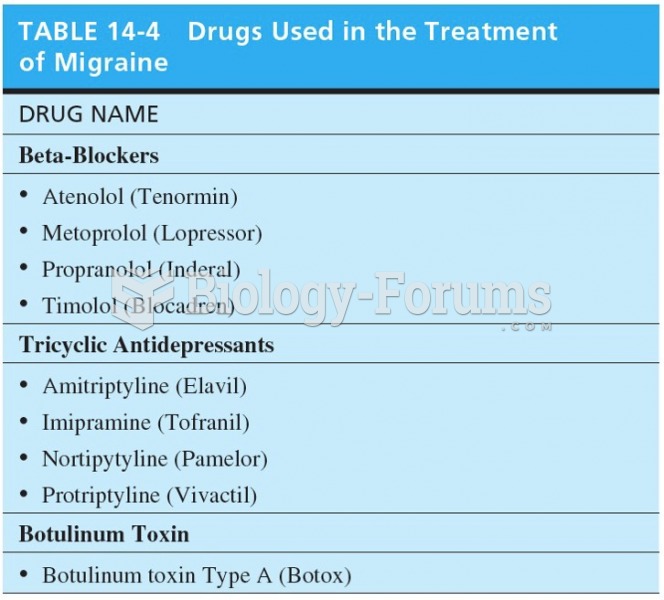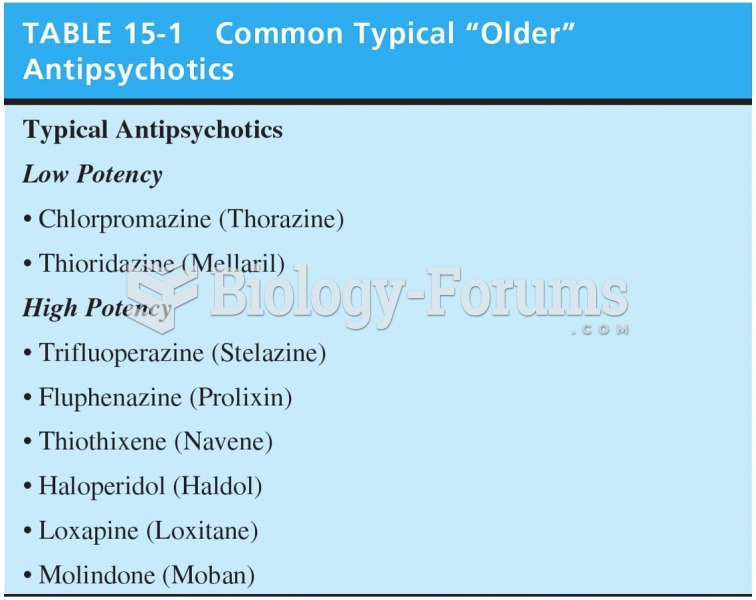Answer to Question 1
Answer: Answers should compare syphilis, gonorrhea, and chlamydia and could include the following information:
Syphilis is an ulcerative STI. It is caused by the bacterium Treponema pallidum, which enters the body through irritated skin or mucous membranes, including the vagina, anus, penis, lips, and mouth. Syphilis is less common than many STIs. Primary syphilis. In the first stage, 10 days to 3 months after infection, primary syphilis appears. A painless sore called a chancre appears. The chancre will go away without treatment, but the infection itself will not. Secondary syphilis. This stage appears approximately 4 to 10 weeks after the primary infection. Symptoms may include a rash on the hands or feet, neck, head, or torso, wartlike growths around the genitals, and grayish sores in the mouth. Hair loss may occur. The infection will then enter a latent stage, which lacks symptoms and can last for yearsor a lifetime. Tertiary syphilis. If syphilis isn't treated, about 15 of people will develop the late- or tertiary-stage syphilis, in which small inflammatory growths called gummas appear on the face, torso, extremities, and internal organs. Damage to the nervous system and cardiovascular problems can occur. Examination of a fluid sample taken from a chancre or swollen lymph nodes can confirm infection during primary or secondary syphilis. Antibiotics are the first line of defense against syphilis. If treatment is not initiated until the final stage, the bacteria can be killed but the internal damage that has already occurred cannot be reversed.
Gonorrhea is a common and highly contagious sexually transmitted infection. It is caused by the bacteria Neisseria gonorrhoeae, and most often afflicts adolescent females and young adult males. Most women infected with gonorrhea experience no symptoms at all. Those that do may mistake the painful urination or increased vaginal discharge for a bladder or yeast infection. Men are more likely to have noticeable signs of the condition, including sore testicles, colored penile discharge or a burning sensation while urinating. Symptoms usually occur within the first week after infection. Without proper treatment, the bacteria can spread to other areas of the body. Women can experience pelvic inflammatory disease, which can lead to infertility or an ectopic pregnancy. Several laboratory tests can be used to diagnose gonorrhea, including a urine test or swab samples taken of the cervix, urethra, rectum, or throat. Antibiotics can often cure gonorrhea, but drug-resistant strains have been on the rise, making treatment more complicated.
Chlamydia, which is caused by the bacterium Chlamydia trachomatis, is extremely common in the United States. Young women are especially at risk, with an estimated 1 in 10 adolescent girls testing positive for the infection. The infection can be spread during vaginal, anal, or oral intercourse, and can be passed from mother to newborn baby during childbirth. Chlamydia is called the silent disease because the majority of those infected with it do not notice any signs or symptoms. Urethritis is commonly caused by Chlamydia trachomatis, and women may notice an abnormal vaginal discharge. Symptoms usually develop within 1 to 3 weeks of infection. If left untreated, chlamydia can have serious health consequences and lead to infertility. In 1015 of the women whose chlamydia is not treated promptly, pelvic inflammatory disease occurs. Chlamydia can also leave men infertile, inflaming the prostate gland and epididymis and scarring the urethra. Chlamydia can be cured with antibiotics. All sexual partners should be treated at the same time to avoid reinfection.
Answer to Question 2
Answer: Responses may vary, but students may identify the following questions:
Do you have any STIs?
Have you ever participated in risky behaviors in the past?
Have you been tested for STIs in the past and have you participated in risky behaviors since then?
Are you prepared to use a condom?







